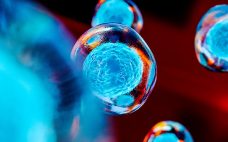Here we review strategies for gaining Food and Drug Administration (FDA) approval of allogeneic, pluripotent cell therapies. The crux of the discussion is that when developing a cell therapeutic, it is critical to look as much as a decade ahead to when FDA approval will be sought to commercialize the product through a biologics license application (BLA). While this discussion focuses on FDA approval of cell therapies, it is important to acknowledge the vast number of cell therapy clinical efforts…
Author Archives: BPI Contributor
Opto-Sensor Guided Centrifugation for Efficient, Reagent-Free Cell Separation in a Semi-Automated Closed System
This webcast features: Ben Josey, PhD, Field Applications Scientist, Corning Life Sciences The potential for cell-based immunotherapies is moving fast. But some of the processes to develop and manufacture these clinical-grade therapies can slow you down. This Ask the Expert webinar will cover ways you can reduce the manual steps involved in traditional cell processing. Attend to learn more about: Tips to streamline cell separation and formulation of specific cell populations for cell and gene therapy development and manufacturing Ways…
De-Risking INDs with Unrivaled Monoclonality Assurance in Cell Line Development
This webcast features: Tanner Nevill, Vice President, Program Management, Berkeley Lights Monoclonality assurance is a central regulatory requirement for all cell lines manufacturing biologic therapies. Imaging is currently the gold standard for confirming that production cell lines originate from a single cell.â¯However, conventional well plate imaging is very labor-intensive and prone to error due to the presence of “ghost” cells and debris that are difficult to differentiate from cells.â¯Opto™ cell line development (CLD) on the Berkeley Lights Beacon® system provides…
How to Halve the Costs of Antibody Purification?
This webcast features:Â Romain Dabre, Senior Product Manager, Tosoh Bioscience Downstream processing is responsible for up to 80% of the entire production costs of biotherapeutics. Given the current drive to reduce manufacturing costs for biological therapeutics, streamlining downstream processing is necessary for chromatographers and process engineers. In this presentation, we showcase the benefits of using only two chromatography processes to purify monoclonal antibodies compared to the standard industrial process. Combining high-performance Protein A capturing and a single polishing step on salt-tolerant…
Your Guide to Efficiently Develop Antibody-Based Therapeutics
This eBook presents various techniques used to measure the stability of antibody-based biotherapeutics. The authors address the ins-and-outs of monoclonal antibody (MAb) formulation, cover Investigational New Drug (IND) and New Drug Application (NDA) filing timelines, and explain how storage conditions affect MAb stability. Monoclonal antibodies have been used in therapeutics for more than 30 years. Efforts to further develop and optimize better MAb-based biotherapeutics are increasing as they have become increasingly popular for the treatment and prevention of many diseases…
Best Practices for Ensuring High Virus Clearance When Using Anion Exchange Membrane Adsorbers
This webcast features: Sherri Dolan, Global Technology Consultant, Separations Marketing Group, Sartorius Stedim Biotech The risk of viral contamination is a concern for all biopharmaceuticals and vaccines derived from cell lines and can have serious implications. Contamination events can cost millions of dollars in investigation, clean-up, corrective action, and manufacturing plant downtime. Most importantly, such events pose a safety risk to the patient. To ensure the safety of biological products, regulatory agencies require manufacturing processes to have a validated current…
Configurable, Single-Use TFF Systems for Rapid Bioprocessing
This webcast features: David Serway, Global Director, Single-Use TFF Systems and ProConnex® Flow Paths, Repligen The explosive growth in biologics and gene therapies, the globalization of biomanufacturing, and the pressures to reduce capital investment and cost of goods while accelerating speed to market all point to changes in how bioprocessing systems/skids are designed, built, and operated. Future hardware, software, and consumables built on the principle of flexibility and extensive use of single-use, closed, complete, and ready-to-operate technologies will be described.…
Scalability of Lentiviral Production with the CTS LV-MAX Lentiviral Production System in Bioreactors
The Gibco™ CTS™ LV-MAX™ Lentiviral Production System provides a scalable and high-yield lentiviral vector (LV) production platform. It is based on a high-density suspension culture of HEK293Fâderived Viral Production Cells that have been optimized for viral production in chemically defined LV-MAX Production Medium. Scalable LV production of greater than 1 x 10⸠TU/mL LV (unconcentrated) can be achieved using our proprietary lipid nanoparticle transfection reagent in combination with an LV-specific enhancer and production supplement. All components work synergistically to help…
Technology Transfers – A Beginnerâs Guide
Pharmaceutical developers are increasingly relying on external manufacturing partners for expertise to develop and commercialize their products. In fact, contract development and manufacturing organizations (CDMOs) now process and manufacture approximately 28 percent of the worldâs prescription and non-prescription drugs. Innovation is coming from all corners of pharma including independent labs, scientific consortia, academia and government programs. These emerging sources of drug innovation often have excellent science but few resources and a lack of experience in commercializing formulations and drug product…
Bioprocess Selection and Economics: 5,000-L DynaDrive™ Bioreactor Shifting the Paradigm
This webcast features: Jeff Johnson, Founder and President, BioTech Design, LLC, Mark Thomas Smith, R&D Engineer, Thermo Fisher Scientific, and Kevin Mullen, Senior Product Manager, Thermo Fisher Scientific Single-use technologies enable a flexibility and modularity effectively unattainable with more traditional stainless-steel technologies, particularly in upstream bioprocesses. Single-use bioreactors up to 2,000 L are employed largely in preclinical- and clinical-stage bioprocesses to leverage this flexibility. As products reach commercial maturity, scales larger than 2,000 L frequently become desirable to take advantage…










